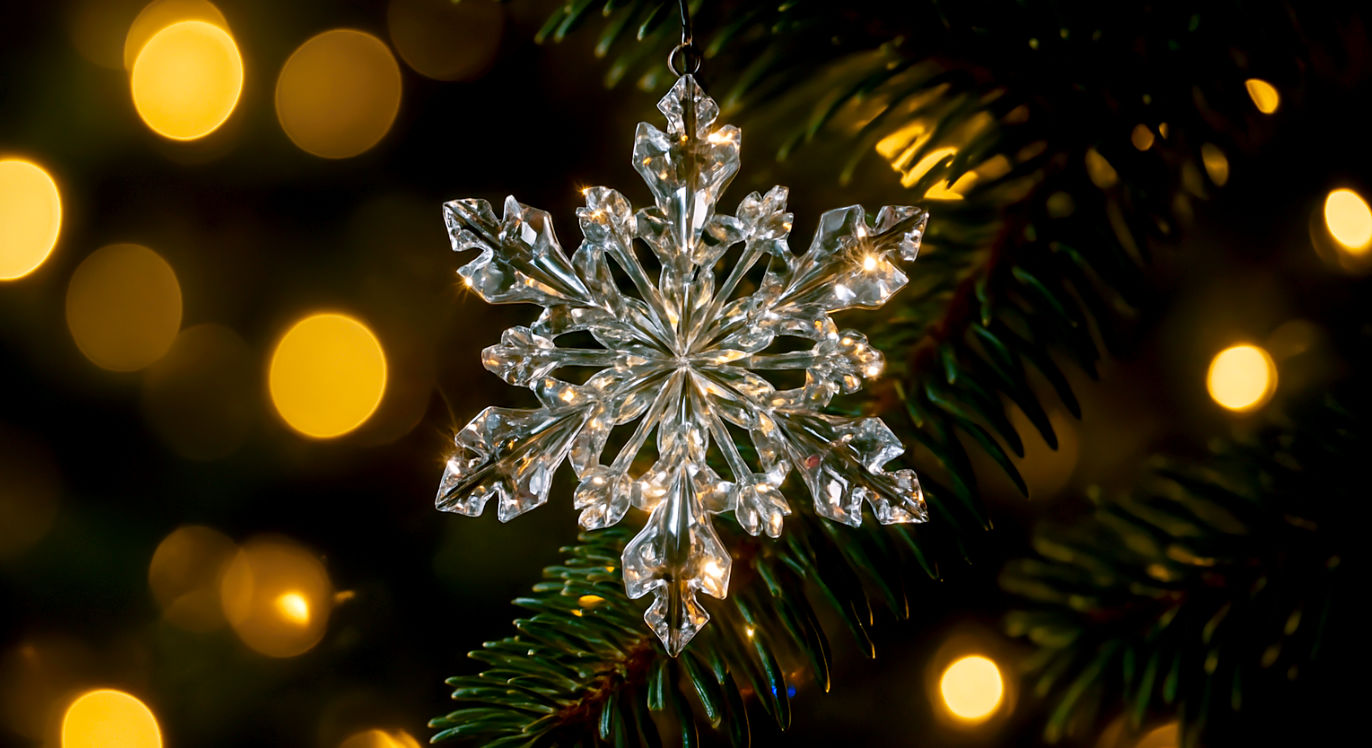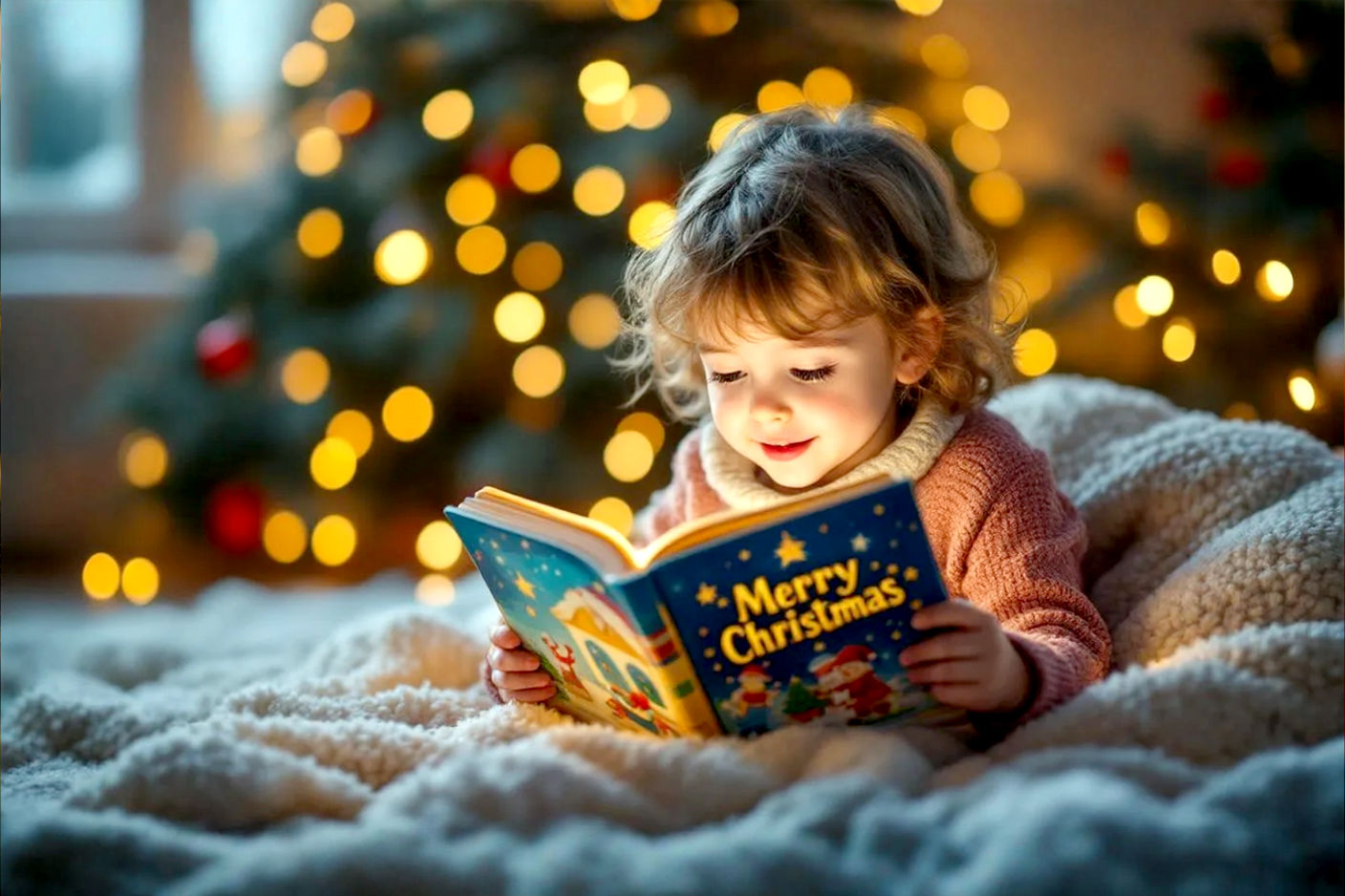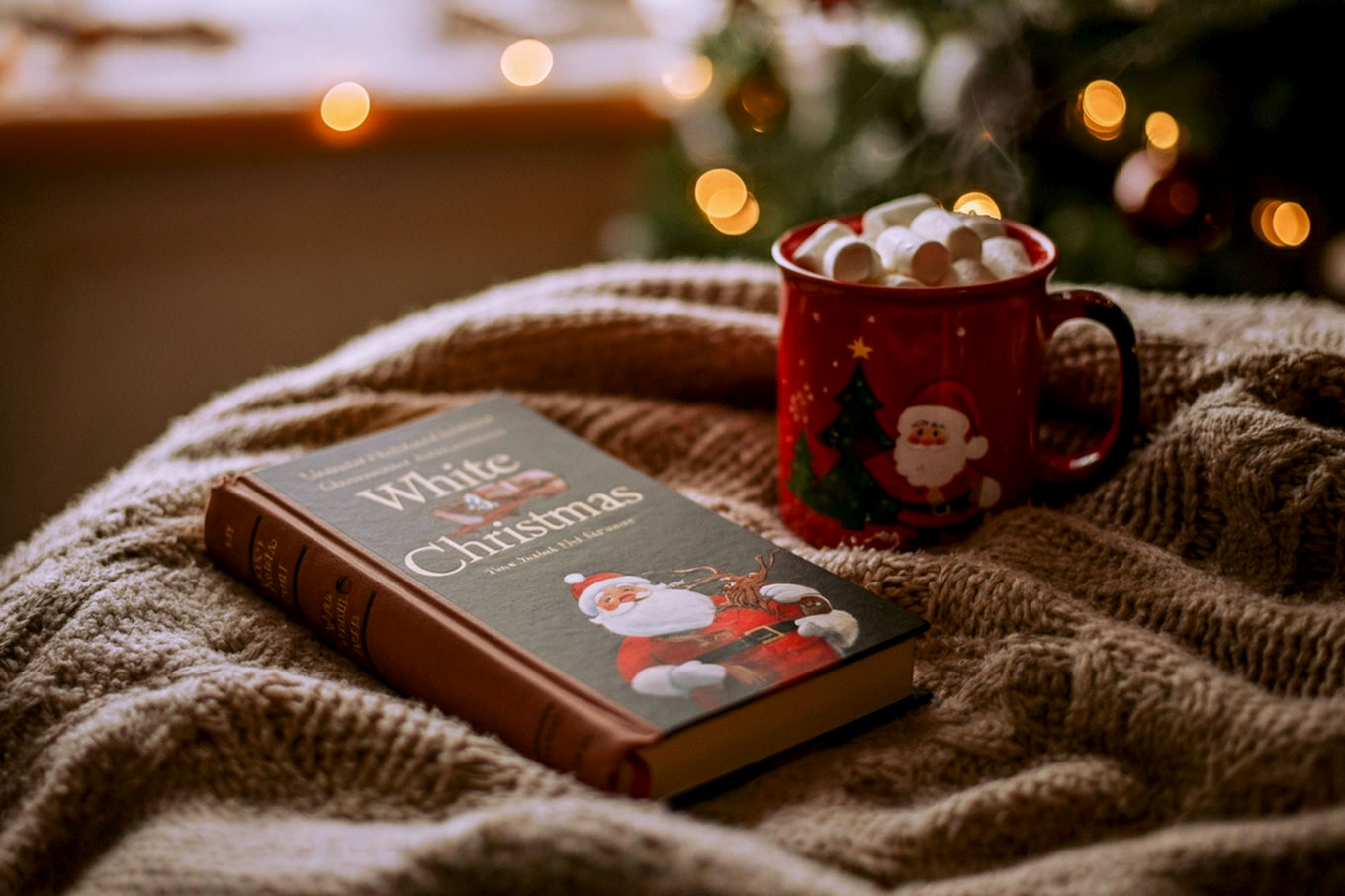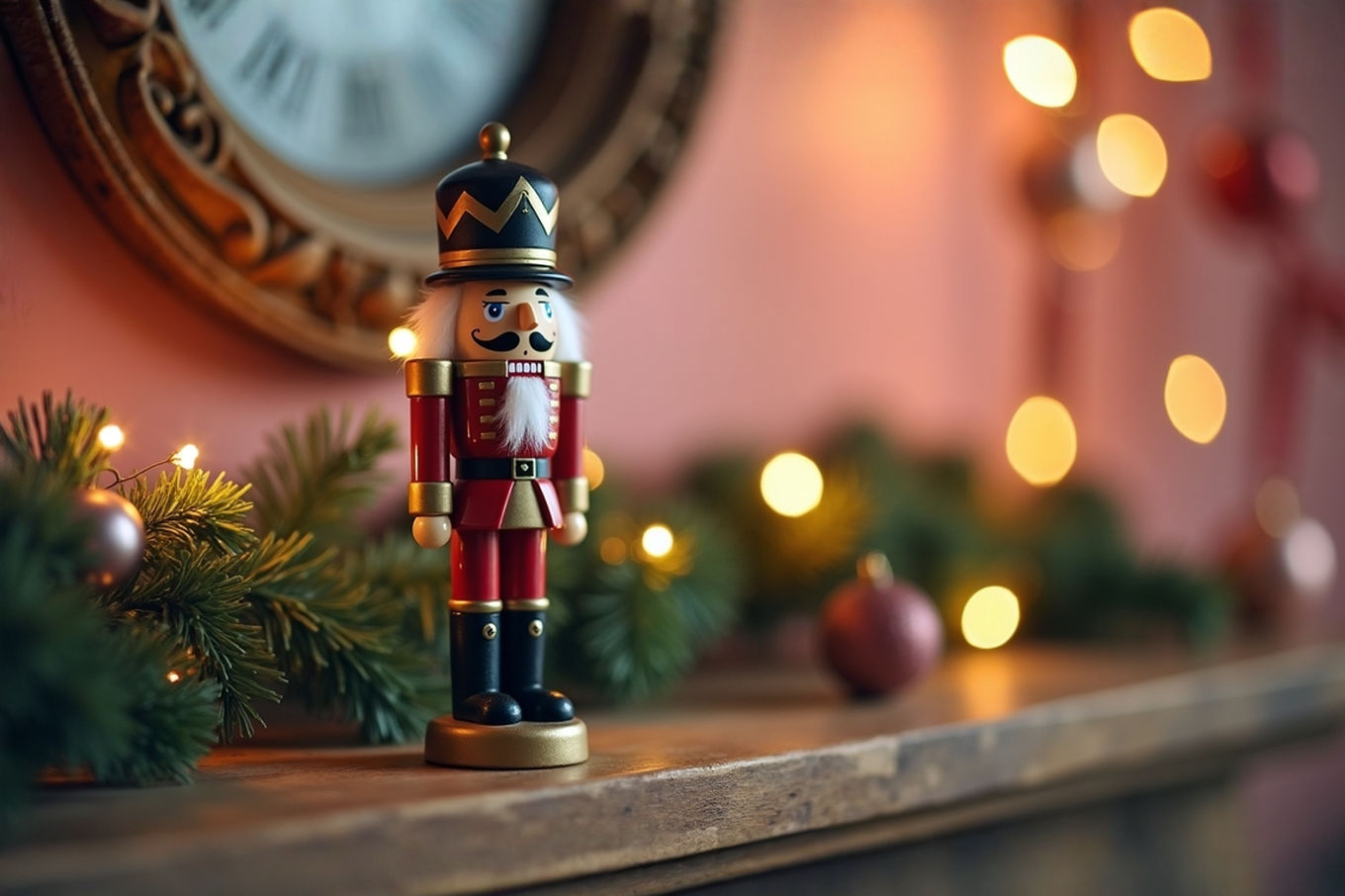This post may contain affiliate links. If you make a purchase through these links, we may earn a commission at no additional cost to you.
The holiday season brings a unique kind of magic, doesn’t it? From twinkling lights and festive carols to cozy family gatherings, Christmas is a time filled with warmth, joy, and plenty of cherished traditions. But how much do you really know about this beloved holiday? Beyond the carols and the presents, there’s a rich history, fascinating facts, and delightful details that make Christmas truly special.
This comprehensive guide isn’t just an article; it’s your definitive Christmas Trivia Multiple Choice Challenge. We’ve curated a series of engaging questions designed to test your holiday IQ across various categories. Whether you’re a casual Christmas enthusiast or a self-proclaimed holiday historian, you’ll find plenty to learn and enjoy here. Get ready to dive deep into the origins of classic traditions, iconic holiday movies and music, the legend of Santa Claus, global celebrations, and even some surprising festive facts.
Think of this as your one-stop shop for everything Christmas trivia. You can use it to challenge yourself, host a lively holiday game night with family and friends, or simply expand your knowledge of the most wonderful time of the year. Let’s see if you can master your holiday knowledge and conquer this Christmas challenge!
The Enduring Appeal of Christmas Trivia
There’s something universally appealing about trivia, especially during the holidays. It transforms passive entertainment into an interactive, brain-teasing experience. When it comes to Christmas, the sheer volume of stories, songs, and traditions offers a seemingly endless well of interesting facts.
More Than Just a Game: Why Trivia Matters
Trivia isn’t just about showing off how much you know; it offers a surprising array of benefits, particularly during the festive season. First and foremost, it’s incredibly fun and entertaining. A well-crafted trivia game can spark friendly competition, create laughter, and provide a memorable activity for any gathering. It breaks the ice and gets everyone involved, regardless of age or background.
Beyond the entertainment, there’s significant educational value. You’ll undoubtedly learn new facts you never knew before. Ever wondered why we hang stockings or what the “X” in “Xmas” actually means? Trivia questions often reveal these interesting tidbits, expanding your general knowledge in a enjoyable way. It’s a low-pressure environment for absorbing information without even realizing you’re learning.
Moreover, Christmas trivia fosters social bonding. It encourages interaction, collaboration (if played in teams), and shared experiences. Family members of all generations can participate, leading to discussions, shared memories, and a stronger sense of togetherness. This collaborative element makes holiday gatherings even more special. Finally, engaging in trivia provides cognitive benefits. It exercises your memory, recall abilities, and problem-solving skills. It keeps your brain sharp and active, which is always a good thing, even during relaxed holiday periods.
Setting the Stage for Your Challenge
Before you dive into the questions, here are a few tips to make the most of this challenge:
- Self-Challenge: Simply read through the questions, choose your answer, and then scroll down to the answers section to check your score. Keep track of how many you get right!
- Host a Trivia Night: Read the questions aloud to your family and friends. You can divide into teams, set a time limit for answers, and even offer small prizes for the winners. This guide provides a ready-made quiz for your next holiday party.
- No Peeking! Try to answer each question honestly before looking at the options or the correct answer. The true fun comes from testing your genuine knowledge.
Are you ready? Let’s start challenging your festive intellect!
Round 1: Classic Christmas Traditions & History
Christmas, as we know it today, is a fascinating blend of ancient customs, religious observances, and cultural evolutions. Many of our most beloved traditions have surprising origins that stretch back centuries, long before the modern holiday took shape.
The Roots of the Season: Ancient Origins
Before Christmas became a Christian holiday, various cultures around the world celebrated the winter solstice. This shortest day of the year was a significant event, often marked by festivals of light and rebirth, symbolizing the sun’s return. The Romans, for example, celebrated Saturnalia in mid-December. This ancient Roman festival honored the god Saturn and was characterized by feasting, gift-giving, and a general reversal of social norms, including gambling and merrymaking. Many historians believe elements of Saturnalia, like gift-giving and feasting, influenced early Christmas celebrations.
Evolution of Christmas: From Ancient Rites to Modern Celebration
The adoption of December 25th as the birthdate of Jesus occurred centuries after his life, likely in the 4th century CE. It’s thought to have been chosen to align with existing pagan winter festivals, helping to ease the transition for new Christian converts. The holiday’s celebration waxed and waned over the centuries. During the Victorian era in the 19th century, Christmas experienced a significant revival and transformation, particularly in England and America. Queen Victoria and Prince Albert’s popularization of the Christmas tree, coupled with Charles Dickens’s “A Christmas Carol,” helped solidify many of the customs we recognize today, emphasizing family, goodwill, and festive decorations.
Multiple Choice Questions (MCQs) for Round 1
Get ready to test your knowledge of Christmas origins!
Question 1: Historically, Christmas Day (December 25th) was chosen by early Christians to coincide with which pagan festival?
A) Halloween B) Easter C) The Winter Solstice D) Thanksgiving
Question 2: Which country is credited with starting the tradition of the Christmas tree?
A) United Kingdom B) United States C) Germany D) France
Question 3: Which of these well-known Christmas traditions has its origins in ancient Celtic and Norse practices, specifically involving kissing?
A) Decorating with mistletoe B) Hanging stockings by the chimney C) Leaving milk and cookies for Santa D) Singing carols
Question 4: The tradition of hanging stockings by the chimney is often attributed to which legendary figure?
A) Father Time B) St. Nicholas C) Jack Frost D) Ebenezer Scrooge
Question 5: What was the traditional purpose of the Yule Log in ancient winter solstice celebrations?
A) To provide light for reading B) To burn continuously for twelve days to ensure good luck C) To cook the Christmas feast D) To ward off evil spirits for one night
Question 6: The Christian tradition of the Christmas wreath is often said to symbolize what?
A) The joy of the season B) The cyclical nature of time C) Eternal life and God’s everlasting love D) The promise of spring
Question 7: In England, Christmas was actually banned for a period in the 17th century by which Puritan leader?
A) Henry VIII B) William the Conqueror C) Oliver Cromwell D) Queen Elizabeth I
Question 8: Who is widely credited with popularizing the modern Christmas card?
A) Queen Victoria B) Charles Dickens C) Sir Henry Cole D) Thomas Nast
Question 9: The “X” in “Xmas” is not a modern abbreviation, but actually comes from which Greek letter, representing Christ?
A) Alpha B) Chi C) Omega D) Delta
Question 10: The concept of Santa Claus placing gifts in stockings likely originated from a legend where St. Nicholas helped three poor sisters by:
A) Delivering food to their home B) Providing gold coins through their chimney C) Building them a new house D) Offering them jobs
Round 2: Festive Films & Music Trivia
What would Christmas be without the enchanting glow of holiday movies and the heartwarming melodies of carols? These elements have become indispensable parts of our festive experience, creating powerful memories and shaping our collective understanding of the season.
Cinematic Yuletide: Iconic Christmas Movies
Christmas films have a unique ability to transport us to magical worlds, evoke strong emotions, and often teach valuable lessons about love, generosity, and the true meaning of the holidays. From classic black-and-white masterpieces to animated adventures and modern comedies, the genre spans nearly a century. Early films like “Miracle on 34th Street” (1947) and “It’s a Wonderful Life” (1946) set the standard, emphasizing hope and kindness. Later, films such as “A Christmas Story” (1983) captured a nostalgic, humorous look at childhood holidays, while “Elf” (2003) brought modern comedic charm. These movies don’t just entertain; they become annual rituals, impacting pop culture and reinforcing festive themes year after year.
Harmonious Holidays: Beloved Christmas Carols
The power of Christmas music is undeniable. From the moment you hear that first familiar carol, you can feel the spirit of the season begin to stir. Christmas carols have a long and rich history, evolving from medieval folk songs and religious hymns into the diverse collection we cherish today. Many carols originated in different countries and were often sung door-to-door, a tradition known as “wassailing.” Songs like “Silent Night” and “Jingle Bells” have stories of their own, often tied to specific historical events or periods. These beloved melodies serve as the soundtrack to our holidays, bringing people together in song and spreading cheer.
Multiple Choice Questions (MCQs) for Round 2
Time to test your knowledge of holiday entertainment!
Question 1: In the classic film “It’s a Wonderful Life,” what is the name of George Bailey’s guardian angel?
A) Clarence Odbody B) Charlie Brown C) Tiny Tim D) Rudolph
Question 2: In the movie “Miracle on 34th Street,” what department store does Kris Kringle claim to be the real Santa for?
A) Macy’s B) Gimbels C) Bloomingdale’s D) Nordstrom
Question 3: What city does Kevin McCallister’s family accidentally leave him behind in during “Home Alone”?
A) New York City B) Chicago C) Paris D) Miami
Question 4: According to Buddy the Elf in the movie “Elf,” what are the four main food groups?
A) Meat, vegetables, dairy, grains B) Candy, candy canes, candy corn, syrup C) Pasta, pizza, burgers, fries D) Sugar, spice, everything nice, and chemical X
Question 5: In “A Christmas Story,” what is the famous, fragile lamp that Ralphie’s father wins shaped like?
A) A bowling pin B) A fish C) A woman’s leg D) A Christmas tree
Question 6: Which Christmas song is recognized by Guinness World Records as the best-selling single of all time?
A) “Rudolph the Red-Nosed Reindeer” B) “Silent Night” C) “White Christmas” D) “Jingle Bells”
Question 7: Who composed the iconic song “White Christmas,” famously sung by Bing Crosby?
A) Irving Berlin B) Frank Loesser C) Johnny Marks D) Mel Tormé
Question 8: “Jingle Bells” was originally written for what other holiday, not Christmas?
A) Thanksgiving B) New Year’s Eve C) Easter D) Halloween
Question 9: In what country did the beloved carol “Silent Night” originate?
A) England B) Germany C) Austria D) France
Question 10: Which popular holiday song features the Spanish phrase “Feliz Navidad”?
A) “Let It Snow! Let It Snow! Let It Snow!” B) “Rockin’ Around the Christmas Tree” C) “Feliz Navidad” D) “Santa Baby”
Round 3: Santa, Sleighs, and Global Celebrations
The image of Santa Claus, with his red suit, white beard, and sack full of toys, is globally recognized as the epitome of Christmas cheer. But his journey from ancient legends to the modern icon is a fascinating tale. Beyond Santa, Christmas is celebrated in a dazzling array of ways across the globe, each country adding its unique cultural flair.
The Man in Red: The Evolution of Santa Claus
The legend of Santa Claus can be traced back to Saint Nicholas, a 4th-century Greek Christian bishop who lived in Myra (modern-day Turkey). St. Nicholas was known for his secret gift-giving, particularly to the poor and needy. Over centuries, his legend evolved and spread, especially in Europe, where he was known by various names like Sinterklaas in the Netherlands. Dutch immigrants brought the Sinterklaas tradition to America, where it gradually transformed into “Santa Claus.” The modern image of Santa—a jolly, plump man in a red suit—was largely solidified in the 19th and early 20th centuries, heavily influenced by illustrations, particularly those commissioned by Coca-Cola in the 1930s. His flying sleigh and a team of reindeer (initially eight, with Rudolph added later) became central to his mythos.
Around the World: Diverse Christmas Customs
While many countries share common Christmas elements like decorated trees and gift-giving, the holiday is a vibrant tapestry of diverse customs. In Germany, children leave shoes outside their doors on December 5th for St. Nicholas to fill with treats. Japan, surprisingly, has adopted KFC as a popular Christmas Eve meal, a tradition sparked by a clever marketing campaign. Ukraine features artificial spiderwebs on Christmas trees, symbolizing good luck and prosperity. Sweden erects a massive Gävle Goat made of straw each year, though it often becomes a target for arsonists. In Italy, an old benevolent witch named La Befana delivers gifts on Epiphany Eve. These unique traditions showcase the rich cultural interpretations of the festive season.
Multiple Choice Questions (MCQs) for Round 3
Let’s see how well you know Santa and global Christmas traditions!
Question 1: Before his red suit became iconic, what was Santa Claus’s original garment color often depicted as?
A) Green B) Blue C) Brown D) Purple
Question 2: In the classic poem “A Visit from St. Nicholas” (also known as “‘Twas the Night Before Christmas”), how many reindeer did Santa originally have pulling his sleigh?
A) Six B) Seven C) Eight D) Nine (including Rudolph)
Question 3: The popular character Rudolph the Red-Nosed Reindeer was created for what purpose?
A) A children’s book B) A Christmas carol C) A department store’s promotional campaign D) A movie character
Question 4: According to popular lore, where does Santa Claus live and operate his workshop?
A) The North Pole B) Greenland C) Lapland, Finland D) Alaska
Question 5: In Germany, a common Christmas Eve tradition involves finding a hidden item in the Christmas tree for good luck. What is it?
A) A pickle B) An apple C) A bell D) A small bird
Question 6: Which American fast-food chain has become a popular Christmas Eve tradition in Japan, due to a successful marketing campaign?
A) McDonald’s B) Subway C) KFC D) Burger King
Question 7: In Ukraine, instead of tinsel, some families decorate their Christmas trees with what unusual item for good luck?
A) Spiderwebs B) Old coins C) Dried fish D) Miniature boots
Question 8: Which Scandinavian country annually erects a giant straw goat, the Gävle Goat, which is frequently targeted by vandals?
A) Norway B) Sweden C) Denmark D) Finland
Question 9: In Italian folklore, what is the name of the old, kindly witch who delivers gifts to children on Epiphany Eve (January 5th)?
A) Yule Cat B) Krampus C) La Befana D) Perchta
Question 10: The poinsettia plant, a popular Christmas decoration, is native to which country?
A) United States B) Canada C) Mexico D) Brazil
Round 4: Food, Feasts, and Festive Facts
The holidays are synonymous with delicious food, from elaborate feasts to sweet treats. Many Christmas dishes carry their own history and cultural significance. Beyond the culinary delights, the festive season is also packed with curious facts and interesting tidbits that often go unnoticed.
Culinary Christmas: Holiday Delicacies
Christmas meals are often the centerpiece of family gatherings. Gingerbread houses, for instance, originated in Germany in the 16th century, inspired by the fairy tale “Hansel and Gretel.” Their intricate designs and sweet aromas have made them a beloved holiday tradition worldwide. The candy cane isn’t just a sweet treat; its J-shape is said to represent Jesus, and the red stripes signify His sacrifice, while the white symbolizes purity. Plum pudding, often confused with fruitcake, is a traditional British Christmas dessert made with dried fruit and spices, often steamed for hours. Eggnog, a rich, creamy beverage, has roots in medieval European drinks, evolving into the festive concoction we enjoy today, often spiked with rum or brandy. Even cranberry sauce has a surprising American origin, becoming popular in Thanksgiving and Christmas feasts due to the cranberry’s native availability.
Fascinating Facts: Beyond the Obvious
Beyond the well-known traditions, there are countless intriguing facts about Christmas. The U.S. Postal Service handles an enormous volume of mail during the holiday season, often designating specific “busiest mailing days” in December. The first artificial Christmas trees were not always plastic; early versions in Germany were made from goose feathers dyed green! Charles Dickens’s “A Christmas Carol” introduced the world to the miserly Ebenezer Scrooge and his ghostly visitors—specifically, three spirits of Christmas. The song “The Twelve Days of Christmas” famously lists a cumulative total of gifts given over the twelve days after Christmas. And believe it or not, some places celebrate Christmas for an extended period, making it the “longest Christmas ever.” These facts add another layer of depth to our holiday understanding.
Multiple Choice Questions (MCQs) for Round 4
Time to dig into some festive foods and random holiday knowledge!
Question 1: The tradition of making gingerbread houses originated in which country?
A) Sweden B) Germany C) England D) United States
Question 2: The “J” shape of a candy cane is often said to represent what?
A) Joy B) Jesus C) January D) Jingle
Question 3: Which of these is a traditional British Christmas dessert, typically steamed for hours, and distinct from fruitcake?
A) Panettone B) Stollen C) Plum Pudding D) Bûche de Noël
Question 4: What are the three primary traditional ingredients in a classic eggnog recipe (excluding alcohol)?
A) Milk, sugar, flour B) Cream, eggs, sugar C) Water, lemon, honey D) Orange juice, ginger, cinnamon
Question 5: Cranberry sauce, a common side dish with Christmas dinner, is largely a tradition native to which continent?
A) Europe B) Asia C) North America D) South America
Question 6: In the United States, which month typically experiences the U.S. Postal Service’s busiest mailing days due to holiday deliveries?
A) October B) November C) December D) January
Question 7: The first artificial Christmas trees, created in 19th century Germany, were originally made from what material?
A) Plastic B) Aluminum C) Goose feathers D) Wire and paper
Question 8: In Charles Dickens’s “A Christmas Carol,” how many ghosts visit Ebenezer Scrooge?
A) One B) Two C) Three D) Four
Question 9: How many total gifts are given in the song “The Twelve Days of Christmas” by the end of the song?
A) 12 B) 24 C) 78 D) 364
Question 10: Which country is known for having one of the longest Christmas seasons, officially starting in September and lasting until January?
A) Italy B) Mexico C) The Philippines D) Ireland
The Answers: Check Your Holiday IQ!
Alright, the moment of truth has arrived! Let’s see how well you truly mastered your holiday knowledge. Compare your answers with ours below, and don’t forget to give yourself credit for every correct answer!
Round 1 Answers: Classic Christmas Traditions & History
- C) The Winter Solstice
- Explanation: Early Christians adapted existing pagan winter solstice celebrations, which marked the shortest day of the year and the symbolic “rebirth” of the sun, to coincide with the birth of Jesus. This helped in the spread of Christianity by incorporating familiar festive elements.
- C) Germany
- Explanation: The tradition of decorating evergreen trees as Christmas trees originated in 16th-century Germany. It was brought to England and America in the 19th century, notably popularized by Queen Victoria and Prince Albert.
- A) Decorating with mistletoe
- Explanation: The tradition of kissing under the mistletoe has roots in ancient Celtic and Norse cultures, where mistletoe was seen as a sacred plant representing peace, love, and fertility.
- B) St. Nicholas
- Explanation: Legends of St. Nicholas, the patron saint of children and gift-giving, include stories of him dropping gold coins down chimneys, which landed in stockings hung by the fire to dry.
- B) To burn continuously for twelve days to ensure good luck
- Explanation: In ancient European traditions, especially among Norse and Germanic peoples, a large log was burned from Christmas Eve through the Twelfth Night, believed to bring good fortune and ward off evil spirits for the coming year.
- C) Eternal life and God’s everlasting love
- Explanation: The circular shape of the wreath symbolizes eternity, as it has no beginning or end. The evergreen foliage represents everlasting life, especially in a spiritual context.
- C) Oliver Cromwell
- Explanation: During the English Civil War, the Puritan-led Parliament under Oliver Cromwell banned Christmas celebrations in 1647, viewing them as excessively frivolous and pagan, until the Restoration in 1660.
- C) Sir Henry Cole
- Explanation: Sir Henry Cole, a British civil servant, is credited with commissioning the first commercial Christmas card in London in 1843, leading to its widespread popularity.
- B) Chi
- Explanation: The “X” in “Xmas” is the Greek letter “Chi,” which is the first letter of the Greek word for Christ, “Xριστoςˊ” (Christos). So, “Xmas” is an ancient and perfectly legitimate abbreviation.
- B) Providing gold coins through their chimney
- Explanation: One of the most famous legends of St. Nicholas involves him anonymously dropping bags of gold down the chimney of a poor man’s house, which supposedly landed in stockings hung by the fire to dry, saving his daughters from a desperate fate.
Round 2 Answers: Festive Films & Music Trivia
- A) Clarence Odbody
- Explanation: Clarence is an “angel second class” sent to save George Bailey from despair and show him what life would be like if he had never been born.
- A) Macy’s
- Explanation: The film centers around Kris Kringle, who is hired to play Santa at Macy’s and eventually proves he is the real Santa.
- B) Chicago
- Explanation: The McCallister family departs for Paris for their Christmas vacation, accidentally leaving Kevin behind in their home in suburban Chicago.
- B) Candy, candy canes, candy corn, syrup
- Explanation: Buddy, having been raised by elves in the North Pole, has a very specific, sugar-heavy diet that he proudly proclaims as the elves’ main food groups.
- C) A woman’s leg
- Explanation: Ralphie’s father wins a “major award,” which turns out to be a lamp shaped like a woman’s leg wearing a fishnet stocking, much to the family’s mixed reactions.
- C) “White Christmas”
- Explanation: Bing Crosby’s version of “White Christmas” is recognized by Guinness World Records as the best-selling single worldwide, with estimated sales over 50 million copies.
- A) Irving Berlin
- Explanation: The incredibly prolific American composer and lyricist Irving Berlin wrote “White Christmas” in 1940.
- A) Thanksgiving
- Explanation: James Lord Pierpont originally composed “One Horse Open Sleigh” in 1850 for a Thanksgiving Sunday school celebration, though it quickly became associated with Christmas.
- C) Austria
- Explanation: “Silent Night” (German: “Stille Nacht, heilige Nacht”) was first performed on Christmas Eve 1818 in a small Austrian village church by Joseph Mohr and Franz Xaver Gruber.
- C) “Feliz Navidad”
- Explanation: Written and performed by Puerto Rican singer-songwriter José Feliciano in 1970, “Feliz Navidad” is famous for its simple, bilingual chorus.
Round 3 Answers: Santa, Sleighs, and Global Celebrations
- C) Brown
- Explanation: Early depictions of St. Nicholas and even American versions of Santa Claus before the 1930s often showed him in brown, green, or blue robes, before the red suit became ubiquitous.
- C) Eight
- Explanation: The poem lists Dasher, Dancer, Prancer, Vixen, Comet, Cupid, Donner (or Dunder), and Blitzen (or Blixem). Rudolph was added later in a separate story.
- C) A department store’s promotional campaign
- Explanation: Rudolph was created in 1939 by Robert L. May for Montgomery Ward, a department store, as a promotional giveaway booklet.
- A) The North Pole
- Explanation: The idea of Santa living at the North Pole became popular in the 19th century, cemented by writers and illustrators. While Lapland, Finland, is also a popular “home” for Santa, the North Pole remains the most iconic.
- A) A pickle
- Explanation: The tradition of the “Christmas pickle” involves hiding a glass pickle ornament on the tree; the child who finds it first receives an extra gift or good luck. While its German origin is debated, it’s a popular custom.
- C) KFC
- Explanation: A highly successful “Kentucky for Christmas” marketing campaign by KFC Japan in the 1970s led to Christmas Eve fried chicken dinners becoming a widespread and beloved tradition.
- A) Spiderwebs
- Explanation: Ukrainian folklore tells of a poor widow whose children decorated their Christmas tree with spiderwebs, which then turned into silver and gold on Christmas morning, symbolizing good fortune.
- B) Sweden
- Explanation: Since 1966, the city of Gävle in Sweden has erected a giant straw goat as a Christmas symbol. Sadly, it is famous for often being burned down by vandals before Christmas.
- C) La Befana
- Explanation: La Befana is an old woman who rides a broomstick and delivers gifts to children on Epiphany Eve in Italy, similar to Santa Claus, but often with soot and ashes to symbolize her chimney travels.
- C) Mexico
- Explanation: Poinsettias are native to Mexico and Central America. Their red and green colors made them naturally associated with Christmas.
Round 4 Answers: Food, Feasts, and Festive Facts
- B) Germany
- Explanation: Gingerbread houses gained popularity in Germany after the Brothers Grimm published “Hansel and Gretel” in the early 19th century, leading bakers to create edible fairy tale houses.
- B) Jesus
- Explanation: While not definitively proven, popular lore suggests the J-shape of the candy cane stands for “Jesus,” the white symbolizes purity, and the red stripes represent the blood of Christ.
- C) Plum Pudding
- Explanation: Plum pudding, or Christmas pudding, is a traditional British dessert made with dried fruit, suet, and spices, typically steamed for many hours or even days. It’s different from a dense fruitcake.
- B) Cream, eggs, sugar
- Explanation: The foundational ingredients for eggnog are dairy (milk/cream), eggs (yolks and sometimes whites), and sugar, often spiced with nutmeg, cinnamon, or vanilla. Alcohol is then added.
- C) North America
- Explanation: Cranberries are native to North America, and their use as a sauce became particularly popular with the Thanksgiving and Christmas feasts in the region.
- C) December
- Explanation: Unsurprisingly, December is the peak month for mail volume due to holiday cards, gifts, and packages, with the period between December 15th and 20th typically being the busiest.
- C) Goose feathers
- Explanation: The first artificial Christmas trees in Germany in the 19th century were created using dyed green goose feathers attached to wire branches, designed to look like real evergreens.
- D) Four
- Explanation: Scrooge is visited by the ghost of his former business partner, Jacob Marley, followed by the Ghost of Christmas Past, the Ghost of Christmas Present, and the Ghost of Christmas Yet to Come.
- C) 78
- Explanation: The gifts are cumulative: 1 gift on day 1, 1+2=3 on day 2, 1+2+3=6 on day 3, and so on. If you sum all the gifts listed from day 1 to day 12 (12 lords a-leaping, 11 pipers piping, etc.), the total is 78 gifts.
- C) The Philippines
- Explanation: The Philippines is renowned for having one of the longest Christmas seasons in the world, with carols and decorations appearing as early as September and festivities often extending into January.
Elevate Your Holiday Gatherings with Trivia
Congratulations on completing the Christmas Trivia Multiple Choice Challenge! Whether you aced every question or learned a surprising new fact, we hope you enjoyed this deep dive into holiday knowledge.
Christmas trivia is more than just a game; it’s a fantastic way to connect with others, share laughter, and deepen your appreciation for the rich tapestry of traditions that make the holiday season so special. Imagine the joy of seeing your family members light up as they recall a forgotten movie quote or figure out the origin of a beloved carol. It adds an interactive and memorable layer to any festive gathering.
Consider making a Christmas trivia challenge a perennial tradition in your household. You can use this article as a starting point, or even gather new questions each year to keep things fresh. It’s an easy, low-cost activity that delivers immense fun and engagement.
So, go forth and spread your newfound holiday knowledge! Challenge your friends, impress your family, and truly master the magic of Christmas.
Happy Holidays to you and yours!






